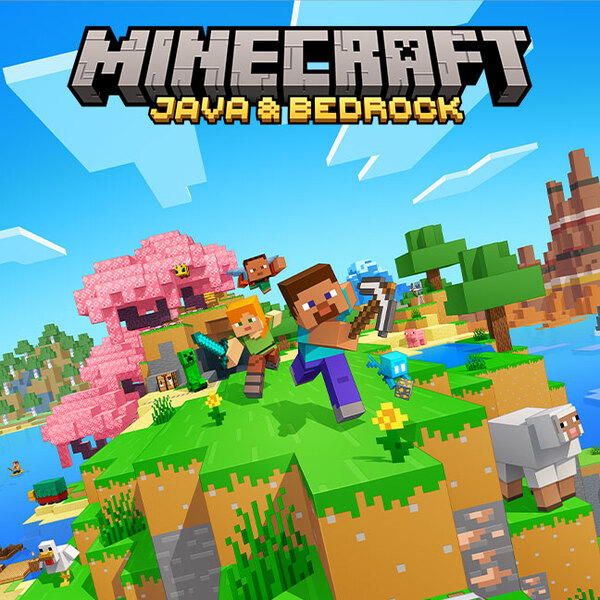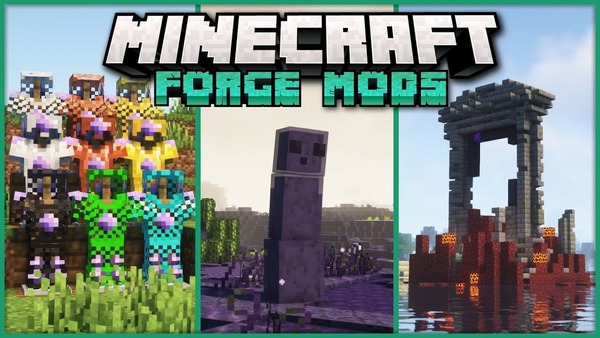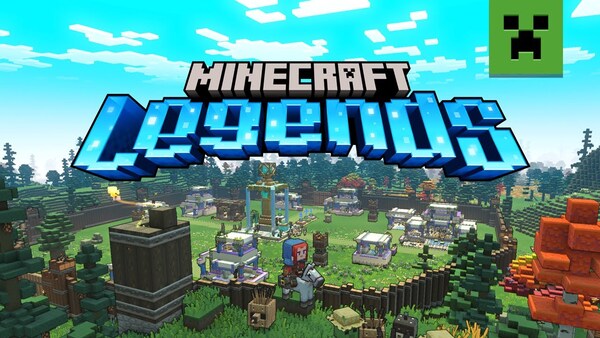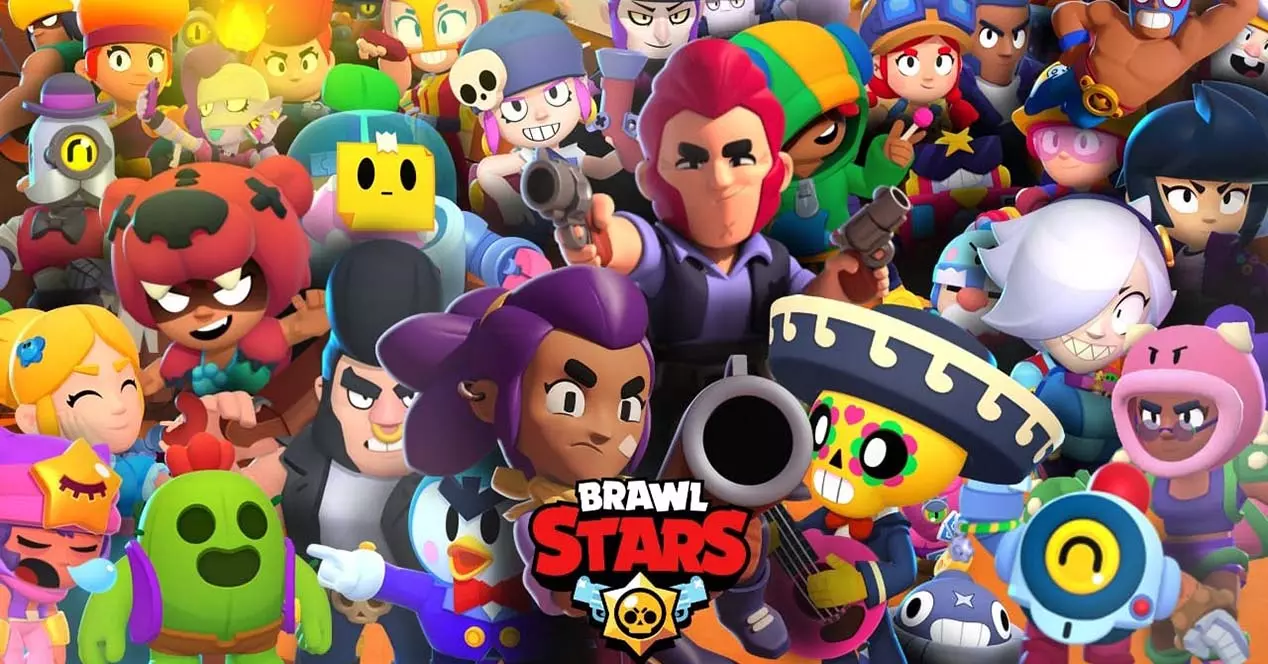Advertisement
Popular Now
Redstone in Minecraft is often referred to as the game's version of electricity. While it is easy to gather the material itself, mastering the intricacies of Redstone is one of the most challenging and rewarding aspects of Minecraft. This article will dive deep into Redstone mechanics, from basic concepts to creating complex circuits, exploring how players can use Redstone to automate tasks, build traps, and even design mini-games.
Understanding Redstone: The Basics
Redstone dust, levers, and torches are the essential components to get started. Players can find Redstone ore deep underground and use it to create electrical circuits. By placing Redstone dust on the ground, you create a wire that transmits signals.
 Redstone Power Sources
Redstone signals come from various sources like levers, buttons, pressure plates, and tripwires. Understanding these power sources is crucial, as they determine how and when Redstone circuits are activated.
Redstone Repeaters and Comparators
Repeaters and comparators play key roles in extending and controlling Redstone signals. Repeaters extend the length of signals, while comparators allow for more complex logic by comparing power levels between different inputs.
Creating Simple Circuits
Once you’ve gathered your basic components, it’s time to create simple circuits. A good starting project is a basic door mechanism using a pressure plate and Redstone wiring.
Building a Redstone Door
To automate a door, connect a pressure plate to the door with Redstone dust. When the plate is stepped on, the door opens automatically. This basic circuit is a great introduction to understanding how Redstone transfers power.
Using Redstone in Lighting Systems
Another simple project is creating Redstone-powered lighting systems. By connecting a lever to a series of Redstone lamps, you can control light in your Minecraft base at will.
Intermediate Redstone Projects
As you grow more comfortable with Redstone basics, you can move on to intermediate circuits that require more complex configurations.
Building a Trap with Redstone
Redstone traps are a favorite among Minecraft players. For instance, using pressure plates or tripwires with dispensers filled with arrows or potions creates a trap that activates when an enemy walks through the trigger.
Automating Farms with Redstone
One of the most practical uses of Redstone is to automate farms. By using dispensers, water streams, and Redstone signals, players can harvest crops like wheat or carrots automatically, saving time and effort.
Advanced Redstone Circuits
Once you’ve mastered intermediate circuits, you can begin to experiment with more advanced Redstone designs that involve multiple components and logic systems.
[caption id="attachment_1615" align="aligncenter" width="600"]
Redstone Power Sources
Redstone signals come from various sources like levers, buttons, pressure plates, and tripwires. Understanding these power sources is crucial, as they determine how and when Redstone circuits are activated.
Redstone Repeaters and Comparators
Repeaters and comparators play key roles in extending and controlling Redstone signals. Repeaters extend the length of signals, while comparators allow for more complex logic by comparing power levels between different inputs.
Creating Simple Circuits
Once you’ve gathered your basic components, it’s time to create simple circuits. A good starting project is a basic door mechanism using a pressure plate and Redstone wiring.
Building a Redstone Door
To automate a door, connect a pressure plate to the door with Redstone dust. When the plate is stepped on, the door opens automatically. This basic circuit is a great introduction to understanding how Redstone transfers power.
Using Redstone in Lighting Systems
Another simple project is creating Redstone-powered lighting systems. By connecting a lever to a series of Redstone lamps, you can control light in your Minecraft base at will.
Intermediate Redstone Projects
As you grow more comfortable with Redstone basics, you can move on to intermediate circuits that require more complex configurations.
Building a Trap with Redstone
Redstone traps are a favorite among Minecraft players. For instance, using pressure plates or tripwires with dispensers filled with arrows or potions creates a trap that activates when an enemy walks through the trigger.
Automating Farms with Redstone
One of the most practical uses of Redstone is to automate farms. By using dispensers, water streams, and Redstone signals, players can harvest crops like wheat or carrots automatically, saving time and effort.
Advanced Redstone Circuits
Once you’ve mastered intermediate circuits, you can begin to experiment with more advanced Redstone designs that involve multiple components and logic systems.
[caption id="attachment_1615" align="aligncenter" width="600"] Once you’ve gathered your basic components, it’s time to create simple circuits[/caption]
Creating Logic Gates
Logic gates like AND, OR, and NOT gates are foundational to advanced Redstone circuits. These gates allow players to control the flow of Redstone signals based on specific conditions, opening up possibilities for more complex builds.
Designing a Redstone Clock
Redstone clocks are continuous circuits that create repetitive pulses. These are useful for building mechanisms that need constant or timed signals, such as a repetitive trap or an automatic farm.
Troubleshooting Redstone Circuits
Even seasoned Redstone engineers run into issues when building circuits. Common problems include signal loss, unintended loops, and misaligned power sources.
Signal Strength and Range Issues
Redstone signals weaken as they travel farther from the source. If a circuit is too long, the signal won’t reach its destination. This issue can be fixed by placing Redstone repeaters at regular intervals.
Identifying Power Leaks
Sometimes, circuits fail because Redstone dust accidentally powers an unintended block. Thoroughly checking connections and avoiding overlapping circuits can prevent this problem.
Automating Complex Systems
As your Redstone skills improve, you can begin to automate complex systems, such as item sorting systems, minecart networks, or even entire bases.
Building an Item Sorter
Item sorters are invaluable for organizing large inventories. By using hoppers, comparators, and Redstone circuits, players can create a system that automatically sorts items into chests based on type.
Automating Minecart Stations
For large Minecraft worlds, automating minecart transportation systems can be a huge time-saver. Using powered rails and Redstone signals, players can build stations that automatically send and receive minecarts based on demand.
Redstone in Mini-Games
Redstone isn’t just for practical builds; it’s also essential in creating mini-games within Minecraft. From mazes with Redstone-powered doors to parkour challenges that change based on Redstone inputs, the possibilities are endless.
Designing a Redstone Puzzle Room
Puzzle rooms can be built using Redstone to control the opening and closing of doors based on player input. Combining logic gates and timed circuits makes for a challenging and engaging experience.
[caption id="attachment_1616" align="aligncenter" width="600"]
Once you’ve gathered your basic components, it’s time to create simple circuits[/caption]
Creating Logic Gates
Logic gates like AND, OR, and NOT gates are foundational to advanced Redstone circuits. These gates allow players to control the flow of Redstone signals based on specific conditions, opening up possibilities for more complex builds.
Designing a Redstone Clock
Redstone clocks are continuous circuits that create repetitive pulses. These are useful for building mechanisms that need constant or timed signals, such as a repetitive trap or an automatic farm.
Troubleshooting Redstone Circuits
Even seasoned Redstone engineers run into issues when building circuits. Common problems include signal loss, unintended loops, and misaligned power sources.
Signal Strength and Range Issues
Redstone signals weaken as they travel farther from the source. If a circuit is too long, the signal won’t reach its destination. This issue can be fixed by placing Redstone repeaters at regular intervals.
Identifying Power Leaks
Sometimes, circuits fail because Redstone dust accidentally powers an unintended block. Thoroughly checking connections and avoiding overlapping circuits can prevent this problem.
Automating Complex Systems
As your Redstone skills improve, you can begin to automate complex systems, such as item sorting systems, minecart networks, or even entire bases.
Building an Item Sorter
Item sorters are invaluable for organizing large inventories. By using hoppers, comparators, and Redstone circuits, players can create a system that automatically sorts items into chests based on type.
Automating Minecart Stations
For large Minecraft worlds, automating minecart transportation systems can be a huge time-saver. Using powered rails and Redstone signals, players can build stations that automatically send and receive minecarts based on demand.
Redstone in Mini-Games
Redstone isn’t just for practical builds; it’s also essential in creating mini-games within Minecraft. From mazes with Redstone-powered doors to parkour challenges that change based on Redstone inputs, the possibilities are endless.
Designing a Redstone Puzzle Room
Puzzle rooms can be built using Redstone to control the opening and closing of doors based on player input. Combining logic gates and timed circuits makes for a challenging and engaging experience.
[caption id="attachment_1616" align="aligncenter" width="600"] Redstone signals weaken as they travel farther from the source[/caption]
Redstone-Powered Mazes
Mazes that shift and change through Redstone-powered pistons offer an extra layer of difficulty. Players can design mazes where walls move and doors open or close based on Redstone signals.
Conclusion
Redstone in Minecraft provides players with a unique and powerful tool for creating both practical and fun mechanisms. Mastering Redstone begins with understanding the basics and progresses into building intricate, automated systems. Whether you're building simple doors, traps, or complex puzzles, the possibilities are vast. With dedication and practice, Redstone can elevate your Minecraft experience, transforming your world into a dynamic, automated playground.
Redstone signals weaken as they travel farther from the source[/caption]
Redstone-Powered Mazes
Mazes that shift and change through Redstone-powered pistons offer an extra layer of difficulty. Players can design mazes where walls move and doors open or close based on Redstone signals.
Conclusion
Redstone in Minecraft provides players with a unique and powerful tool for creating both practical and fun mechanisms. Mastering Redstone begins with understanding the basics and progresses into building intricate, automated systems. Whether you're building simple doors, traps, or complex puzzles, the possibilities are vast. With dedication and practice, Redstone can elevate your Minecraft experience, transforming your world into a dynamic, automated playground.
 Redstone Power Sources
Redstone signals come from various sources like levers, buttons, pressure plates, and tripwires. Understanding these power sources is crucial, as they determine how and when Redstone circuits are activated.
Redstone Repeaters and Comparators
Repeaters and comparators play key roles in extending and controlling Redstone signals. Repeaters extend the length of signals, while comparators allow for more complex logic by comparing power levels between different inputs.
Creating Simple Circuits
Once you’ve gathered your basic components, it’s time to create simple circuits. A good starting project is a basic door mechanism using a pressure plate and Redstone wiring.
Building a Redstone Door
To automate a door, connect a pressure plate to the door with Redstone dust. When the plate is stepped on, the door opens automatically. This basic circuit is a great introduction to understanding how Redstone transfers power.
Using Redstone in Lighting Systems
Another simple project is creating Redstone-powered lighting systems. By connecting a lever to a series of Redstone lamps, you can control light in your Minecraft base at will.
Intermediate Redstone Projects
As you grow more comfortable with Redstone basics, you can move on to intermediate circuits that require more complex configurations.
Building a Trap with Redstone
Redstone traps are a favorite among Minecraft players. For instance, using pressure plates or tripwires with dispensers filled with arrows or potions creates a trap that activates when an enemy walks through the trigger.
Automating Farms with Redstone
One of the most practical uses of Redstone is to automate farms. By using dispensers, water streams, and Redstone signals, players can harvest crops like wheat or carrots automatically, saving time and effort.
Advanced Redstone Circuits
Once you’ve mastered intermediate circuits, you can begin to experiment with more advanced Redstone designs that involve multiple components and logic systems.
[caption id="attachment_1615" align="aligncenter" width="600"]
Redstone Power Sources
Redstone signals come from various sources like levers, buttons, pressure plates, and tripwires. Understanding these power sources is crucial, as they determine how and when Redstone circuits are activated.
Redstone Repeaters and Comparators
Repeaters and comparators play key roles in extending and controlling Redstone signals. Repeaters extend the length of signals, while comparators allow for more complex logic by comparing power levels between different inputs.
Creating Simple Circuits
Once you’ve gathered your basic components, it’s time to create simple circuits. A good starting project is a basic door mechanism using a pressure plate and Redstone wiring.
Building a Redstone Door
To automate a door, connect a pressure plate to the door with Redstone dust. When the plate is stepped on, the door opens automatically. This basic circuit is a great introduction to understanding how Redstone transfers power.
Using Redstone in Lighting Systems
Another simple project is creating Redstone-powered lighting systems. By connecting a lever to a series of Redstone lamps, you can control light in your Minecraft base at will.
Intermediate Redstone Projects
As you grow more comfortable with Redstone basics, you can move on to intermediate circuits that require more complex configurations.
Building a Trap with Redstone
Redstone traps are a favorite among Minecraft players. For instance, using pressure plates or tripwires with dispensers filled with arrows or potions creates a trap that activates when an enemy walks through the trigger.
Automating Farms with Redstone
One of the most practical uses of Redstone is to automate farms. By using dispensers, water streams, and Redstone signals, players can harvest crops like wheat or carrots automatically, saving time and effort.
Advanced Redstone Circuits
Once you’ve mastered intermediate circuits, you can begin to experiment with more advanced Redstone designs that involve multiple components and logic systems.
[caption id="attachment_1615" align="aligncenter" width="600"] Once you’ve gathered your basic components, it’s time to create simple circuits[/caption]
Creating Logic Gates
Logic gates like AND, OR, and NOT gates are foundational to advanced Redstone circuits. These gates allow players to control the flow of Redstone signals based on specific conditions, opening up possibilities for more complex builds.
Designing a Redstone Clock
Redstone clocks are continuous circuits that create repetitive pulses. These are useful for building mechanisms that need constant or timed signals, such as a repetitive trap or an automatic farm.
Troubleshooting Redstone Circuits
Even seasoned Redstone engineers run into issues when building circuits. Common problems include signal loss, unintended loops, and misaligned power sources.
Signal Strength and Range Issues
Redstone signals weaken as they travel farther from the source. If a circuit is too long, the signal won’t reach its destination. This issue can be fixed by placing Redstone repeaters at regular intervals.
Identifying Power Leaks
Sometimes, circuits fail because Redstone dust accidentally powers an unintended block. Thoroughly checking connections and avoiding overlapping circuits can prevent this problem.
Automating Complex Systems
As your Redstone skills improve, you can begin to automate complex systems, such as item sorting systems, minecart networks, or even entire bases.
Building an Item Sorter
Item sorters are invaluable for organizing large inventories. By using hoppers, comparators, and Redstone circuits, players can create a system that automatically sorts items into chests based on type.
Automating Minecart Stations
For large Minecraft worlds, automating minecart transportation systems can be a huge time-saver. Using powered rails and Redstone signals, players can build stations that automatically send and receive minecarts based on demand.
Redstone in Mini-Games
Redstone isn’t just for practical builds; it’s also essential in creating mini-games within Minecraft. From mazes with Redstone-powered doors to parkour challenges that change based on Redstone inputs, the possibilities are endless.
Designing a Redstone Puzzle Room
Puzzle rooms can be built using Redstone to control the opening and closing of doors based on player input. Combining logic gates and timed circuits makes for a challenging and engaging experience.
[caption id="attachment_1616" align="aligncenter" width="600"]
Once you’ve gathered your basic components, it’s time to create simple circuits[/caption]
Creating Logic Gates
Logic gates like AND, OR, and NOT gates are foundational to advanced Redstone circuits. These gates allow players to control the flow of Redstone signals based on specific conditions, opening up possibilities for more complex builds.
Designing a Redstone Clock
Redstone clocks are continuous circuits that create repetitive pulses. These are useful for building mechanisms that need constant or timed signals, such as a repetitive trap or an automatic farm.
Troubleshooting Redstone Circuits
Even seasoned Redstone engineers run into issues when building circuits. Common problems include signal loss, unintended loops, and misaligned power sources.
Signal Strength and Range Issues
Redstone signals weaken as they travel farther from the source. If a circuit is too long, the signal won’t reach its destination. This issue can be fixed by placing Redstone repeaters at regular intervals.
Identifying Power Leaks
Sometimes, circuits fail because Redstone dust accidentally powers an unintended block. Thoroughly checking connections and avoiding overlapping circuits can prevent this problem.
Automating Complex Systems
As your Redstone skills improve, you can begin to automate complex systems, such as item sorting systems, minecart networks, or even entire bases.
Building an Item Sorter
Item sorters are invaluable for organizing large inventories. By using hoppers, comparators, and Redstone circuits, players can create a system that automatically sorts items into chests based on type.
Automating Minecart Stations
For large Minecraft worlds, automating minecart transportation systems can be a huge time-saver. Using powered rails and Redstone signals, players can build stations that automatically send and receive minecarts based on demand.
Redstone in Mini-Games
Redstone isn’t just for practical builds; it’s also essential in creating mini-games within Minecraft. From mazes with Redstone-powered doors to parkour challenges that change based on Redstone inputs, the possibilities are endless.
Designing a Redstone Puzzle Room
Puzzle rooms can be built using Redstone to control the opening and closing of doors based on player input. Combining logic gates and timed circuits makes for a challenging and engaging experience.
[caption id="attachment_1616" align="aligncenter" width="600"] Redstone signals weaken as they travel farther from the source[/caption]
Redstone-Powered Mazes
Mazes that shift and change through Redstone-powered pistons offer an extra layer of difficulty. Players can design mazes where walls move and doors open or close based on Redstone signals.
Conclusion
Redstone in Minecraft provides players with a unique and powerful tool for creating both practical and fun mechanisms. Mastering Redstone begins with understanding the basics and progresses into building intricate, automated systems. Whether you're building simple doors, traps, or complex puzzles, the possibilities are vast. With dedication and practice, Redstone can elevate your Minecraft experience, transforming your world into a dynamic, automated playground.
Redstone signals weaken as they travel farther from the source[/caption]
Redstone-Powered Mazes
Mazes that shift and change through Redstone-powered pistons offer an extra layer of difficulty. Players can design mazes where walls move and doors open or close based on Redstone signals.
Conclusion
Redstone in Minecraft provides players with a unique and powerful tool for creating both practical and fun mechanisms. Mastering Redstone begins with understanding the basics and progresses into building intricate, automated systems. Whether you're building simple doors, traps, or complex puzzles, the possibilities are vast. With dedication and practice, Redstone can elevate your Minecraft experience, transforming your world into a dynamic, automated playground. 















